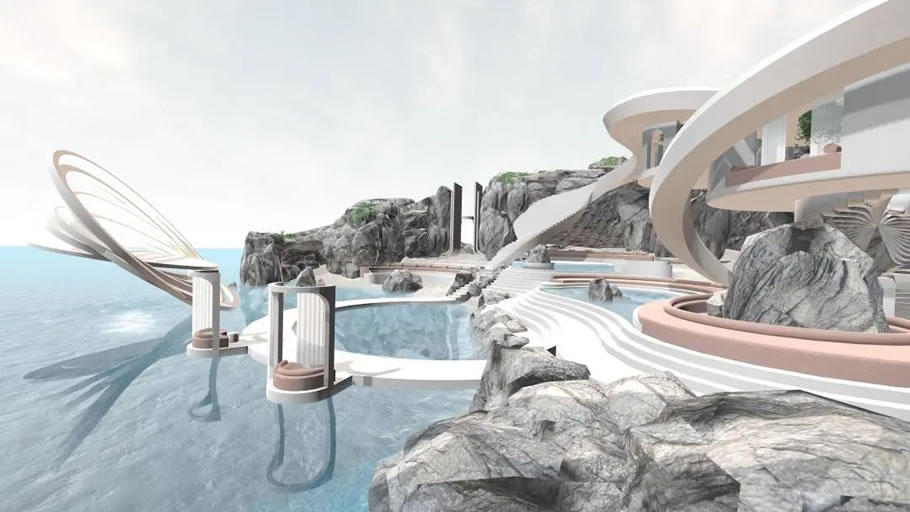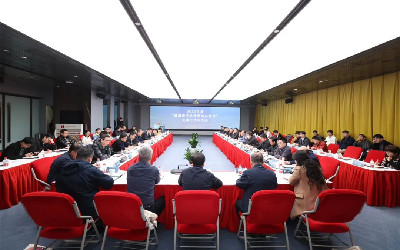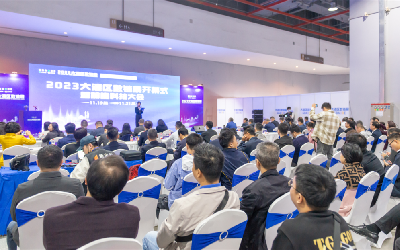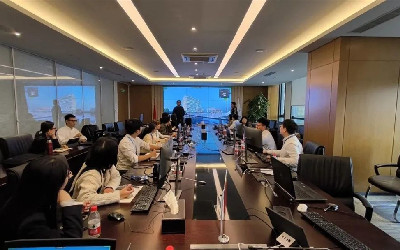
- 首 页 / HOME
- 关 于 / ABOUT
- 2023申奖 / ENTRY
- 获 奖 / AWARDS
- 活 动 / EVENTS
- 资 讯 / NEWS
- 合 作 / PARTNERS

元宇宙(Metaverse)看上去似乎是最近才进入大众视野,但这个概念并不新鲜。在尼尔·斯蒂芬森 1992 年的科幻小说《雪崩》中,这个另类的虚拟世界——或者说,一种可以通过互联网来体验的现实生活的延伸——得到了褒贬不一的评价:谨慎乐观、联结、阴谋、可能性、恐惧、混乱和重新开始的机会等关键词经常浮现。无论如何,品牌已经迅速开始利用这一势头(消费者也是如此):根据 Wunderman Thompson 公司的说法,93% 的全球消费者同意技术是我们的未来;76% 的人认为自己的日常生活依赖于它;但只有超过一半 (52%) 的人表示自己的幸福取决于此。
While it feels like the metaverse only made its way into our orbits recently, the concept isn’t new. Coined in Neal Stephenson’s 1992 sci-fi novel Snow Crash, this alternative, virtual world – or an extension of real life experienced through the internet – has been met with mixed reviews: cautious optimism, connection, intrigue, possibility, fear, disorder and a chance to start over often come to mind. Regardless, brands have been quick to capitalize on its momentum – as have consumers – and it makes sense why: according to Wunderman Thompson, 93% of global consumers agree that technology is our future; 76% say their everyday lives depend on it; and just over half (52%) say their happiness depends on it.
那么,当关注点从现实生活转移到虚拟生活时,建筑师的角色是什么?以及,作为酒店设计师,在虚拟世界中创造体验时所面临的挑战和机遇是什么?在入围 MoNA 画廊的“文艺复兴”竞赛后,我们采访了 WATG 新加坡建筑师 Nora Kaichung Pui、Daniel Espanol、Gajender Sharma 和 Mark Barrientos,更广泛地了解他们的经历和元宇宙。
So, when that focus shifts from real life to virtual, what is the role of the architect? And, as hospitality designers specifically, what are the challenges and opportunities unique to creating experiences in the metaverse? Following their shortlisted participation in MoNA Gallery’s ‘Renaissance’ competition, we interviewed WATG Singapore architects Nora Kaichung Pui, Daniel Espanol, Gajender Sharma and Mark Barrientos about their experience and the metaverse more broadly.
与WATG 新加坡团队谈谈元宇宙
Q & A
with WATG Singapore
请解释一下元宇宙和我们的虚拟酒店设计——Aeaea 。
Can you explain a little bit about the metaverse and our virtual hospitality design, Aeaea?
在过去的几年里,特别是自从 Facebook 更名为 Meta 以来,元宇宙(或 3D 数字世界)的概念获得了极大的推动力。我们看到从建筑师到时装公司的每个人都在探索数字经济及其可能性。我们的团队 (WATG 新加坡)则更关注其在酒店设计方面的潜力,恰逢 MoNA 画廊举办“文艺复兴”竞赛,该竞赛邀请参与者创造一个用于聚会、艺术展览、活动或表演的空间,我们认为这会是一个很不错的起始点。
Over the past few years, and especially since Facebook rebranded to Meta, the concept of the metaverse – or a 3D digital world – has gained momentum. We’re seeing everyone from architects to fashion houses exploring the digital economy and its possibilities. Our team [WATG Singapore] was keen to better understand its potential as relates to hospitality design and MoNA Gallery’s ‘Renaissance’ competition, which invited participants to create spaces for meeting and sharing, exhibiting art, or hosting events and live performance, seemed like a great place to start.
从一开始,我们就想以思考设计度假村相同的方式去思考我们的数字空间。抵达后,客人将踏上的这段旅程会带来身心的放松,也会享受一些惊喜和愉悦的瞬间。在现实生活中,探索是我们设计的核心组成部分,但在目前的元宇宙中,这种原则不再适用——许多虚拟空间都在全力呈现一种非常直接的的科幻感,这并没有错,但是我们的愿景是创造一个超现实景观,唤起一种奇幻而不失宁静的感觉,带入一些好的酒店设计的核心价值,最重要的是,提供一个远离现实世界的喘息机会。所以,我们引申希腊传说中神秘岛屿的意象,将之命名为Aeaea。
From the outset, we wanted to consider our digital space in the same way that we would a resort. Upon arrival, you’re taken on a journey with moments of pause and moments of surprise and delight. Discovery is a core component of our ‘real life’ designs and is at odds with what we’re seeing in the metaverse at the moment – many of the spaces have taken a very overloaded sci-fi stance, which there’s nothing wrong with, but our vision was to create a surreal landscape that evoked a sense of fantasy, a little bit of serenity, some of the core pillars of good hospitality design and, most importantly, provided respite from the real world. We named the space Aeaea, after the mythical Greek island.
你提到创造一个远离现实世界的喘息机会。这是元宇宙最大的机会之一吗?
You mention creating a break from the real world. Is this one of the greatest opportunities for the metaverse?
确实。设计,无论是在现实生活中还是在虚拟世界中,都是关于创造不同形式的“避世”之地。到目前为止的元宇宙中,宁静、平静或舒缓的空间似乎并不那么出彩——我们认为这是一个即将爆发增长的小众市场。
Definitely. Design, whether in real life or a virtual world, is about creating different forms of escapism. In the metaverse so far, serenity and calm or soothing spaces don’t seem to be as prominent – and we think this will be a niche that grows in the near future.
重要的是,不要忽视人们想要从元宇宙中得到的东西与现实生活不同的事实。他们不受现实时间所限,而且总体而言,他们会期待更多。同样,许多人不喜欢现实世界——他们渴望改变环境。让日常生活中的人们创造他们周围的世界,且不受现实生活的束缚,对许多人都很有吸引力。
It’s also important not to overlook the fact that what people want from the metaverse is different to real life. They’re not limited to real-time standards, and, overall, they expect more. Likewise, many people do not like this real world – and they are eager to change their environment. Allowing everyday people to create the world around them – free from the constraints of real life – is appealing to many.
创造这种环境——在现实的酒店设计中和在虚拟世界中,有什么异同?
What are similarities and differences between creating these environments in a real-life hospitality context and the metaverse?
在酒店设计中,我们通常从五种感官开始:视觉、听觉、嗅觉、触觉和味觉。目前在元宇宙中,你可以利用的感官实际上只有三层——但这本身就创造了一个独特的机会。空间的外观和声音,以及用户与空间和其他用户的交互方式是关键因素。随着技术的进步,就像我们在电子游戏中看到的那样,体验将变得更加精致和有氛围感。
In hospitality design, we often begin by looking at the five senses: sight, sound, smell, touch and taste. Currently in the metaverse, there are really only three layers of the senses that you can utilize – but this creates a unique opportunity in itself. How the space looks and sounds, and how the user interacts with both the space and other users, are key factors. As technology advances, like we’ve seen with video games, the experience will become much more refined and atmospheric.
在数字环境中,你还必须通过新的视角来处理诸如舒适之类的感觉。在设计家具时,你无法感觉到或触摸它,因此你需要在空间中尝试其他能够创造“舒适”的元素,例如流水效果或塑造能唤起情感的物体。在元宇宙中做设计,必须要转变视角。
In a digital environment, you also have to approach feelings like comfort through a new lens. When designing furniture, you can’t feel it or touch it, so you need to play around with other elements in the space that create ‘comfort’ such as the effect of running water or shaping the object to evoke emotions. Designing in the metaverse requires a perspective shift.
通常情况下,设计是在考虑目标受众和客户需求的情况下构思的,但互联网有点无边界。这是否将改变设计师的角色?
Normally, designs are conceived with a target audience in mind and a brief from the client, but the internet is somewhat boundaryless. Does this have the capacity to change the role of the designer?
这很有趣——作为建筑师,我们是从一个相当传统的平面开始的。一旦有了这个平面以后,我们的工作流程与虚拟世界可能性之间的差异就变得更加明显了。整体设计体验更具体验性——这不再是你可以用立面或剖面图就能表现的东西。作为一个团队,我们会进入空间,在其中移动的同时做设计,在这里或那里放置一个秘密通道,移动障碍物以提供更好的用户体验等等。也许,不是设计师的角色发生了变化,而是设计师和客户之间的关系发生了变化。没有物理空间的限制,我们不再是简单地根据设计任务书工作,而是双方作为内容创造者一起工作。
It’s funny – we started with a draft plan, as architects, that was rather traditional. Once we had that plan, the differences between our usual work processes and the potential of the metaverse became more apparent. The design experience overall is more experiential – it’s not something that you can draw in elevations or sections. As a group we’d jump in the space and design as we go, deciding to put a secret passage here or there, or moving obstacles to provide a better user experience. Perhaps, then, it’s less a case of the role of the designer changing, but the relationship between the designer and the client evolving. Without the constraints of physical space, it is less about working to a brief and more about us working together as content creators.
你认为人们在元宇宙中应用的原则会开始改变我们在现实中进行设计的方式吗?
Do you think that the principles that people are applying in the metaverse will begin to change the way that we approach or experience design in real life?
我们在数字环境中的设计方式可能会影响我们未来的协作方式——以及结果。随着笔从纸上抬起并变得更加3D,建筑物的形状可能会变得更加有机。
The way we design in digital environments will likely impact the way we collaborate in future – and the outcomes too. Buildings may become a little more organic in shape as pens lift off the paper and become more three dimensional.
作为建筑师,我们其实每天都在设计3D 空间和体验——但在元宇宙中,你始终身处空间内部。这是完全不一样的尺度,你的想法会随着你在空间中的行走而变化。而在现实生活中,很多这样的变化在身处现场后才会发生。在数字世界中进行设计也有一系列不同的限制。例如,重力仍然是一个考量因素。
As architects, we look at 3D spaces and experiences daily – but in the metaverse you are always on the inside. The scale is different, and your mind changes as you go. In real life, a lot of those changes don’t occur until you’re on site. There are also a different set of limitations to designing in the digital world. Gravity is still a consideration, for example.
同样需要注意的是,元宇宙中没有原型。这不是一个与“建筑”严格相关的过程。这里没有景观设计师,没有室内设计师。我们都是所谓“一体”,在这个世界上玩的每个人都是空间设计师,无论他们的训练或背景如何。这种普遍性意味着,作为一名建筑师,你不是在虚拟世界中设计一座建筑,或者也不是作为一名景观设计师去设计景观。很多技术知识都不再被需要了。
Important to note, too, is that there is no archetype in the metaverse. It’s not a strictly architecture-related process. There’s no landscape designer. There’s no interior designer. We’re all ‘one’ and everyone playing in this world is a space designer, regardless of their training or background. This universality means that, as an architect, you’re not in the metaverse to design a building, or as a landscape designer you’re not cultivating landscapes. A lot of the technical knowledge is left behind.
对我们来说,我们接受设计的专业训练,但动画组件本身就是一项技术性很强的技能——想想电影场景和 CGI 的惊人可能性。具有不同技能和背景的人将始终在设计界做出同样有价值的贡献。这一切都是为了创造一种体验——不受现实世界通常限制的阻碍,例如建筑标准、高度限制、安全需求或材料可获得性。
For us, we trained as designers, but the animation component is a highly technical skillset in and of itself – just think about filmsets and the amazing possibilities of CGI. People of different skillsets and backgrounds will always have equally valuable contributions to make in the world of design. It’s all about creating an experience – without being hindered by the usual constraints of the real world, such as building standards, height restrictions, security needs or material availability.
这些进步为客户带来了哪些可能性?
What possibilities do these advancements lead to for clients?
元宇宙的核心是共享体验。我们已经很经常的在平时的设计汇报中使用人工智能,但随着人们越来越接受数字空间,这可能会成为常态。技术的进步使我们能够为我们的客户以及他们的潜在买家和客人创造新的体验。还有一些别的机会,例如与客户和设计师合作在开源平台上创建内容,或者在数字环境中使标志性目的地永生。
At its core, the metaverse is all about shared experience. We already often utilize AI in our client presentations, but as people become more accepting of digital spaces, this could become the norm. Advancements in technology allow us to create new experiences for our clients, and their prospective buyers and guests as well. There are other opportunities, too, such as collaborating with clients and designers to create content in open-source platforms – or immortalizing iconic destinations in digital environments.
虚拟世界中的可持续发展机会是什么?
What is the sustainability opportunity in the metaverse?
目前这个前景还不是很清楚。你可以在元宇宙中设计一个可持续的天堂,但在现实生活中,运行这个程序会消耗大量电力。这个领域还有待发展进化。
Right now, this is unclear. You could design a sustainable sanctuary in the metaverse but, in reality, the programs consume a lot of electricity. This area will need to evolve.




